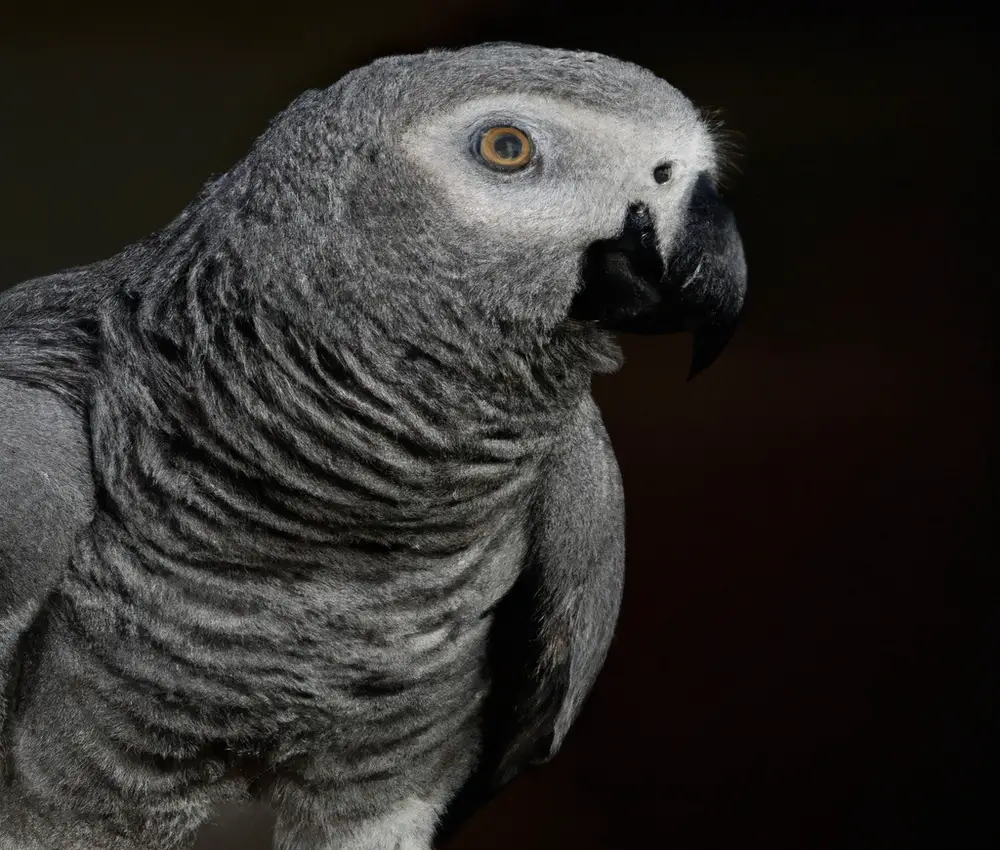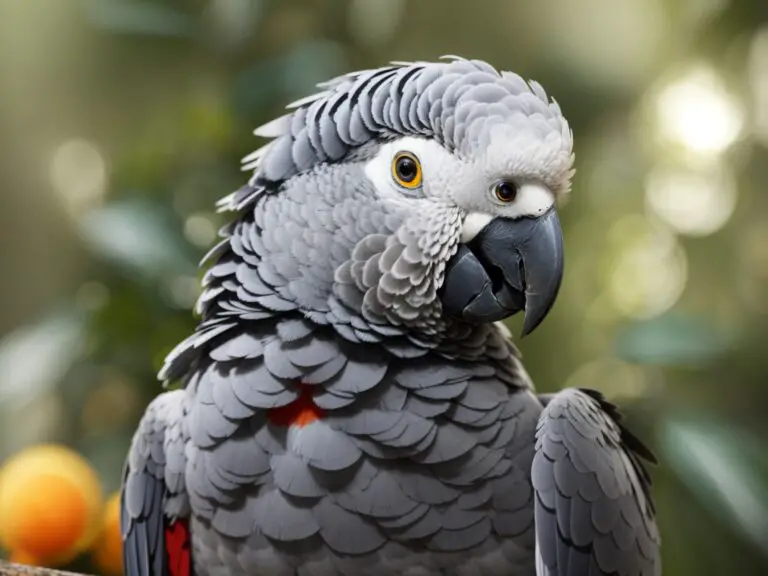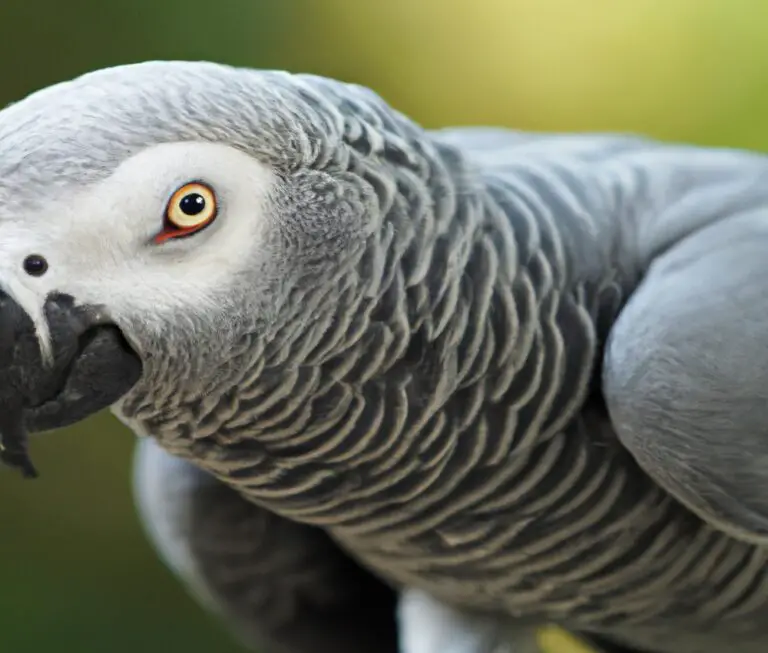How Do African Grey Parrots Build Nests In The Wild?
Key Takeaways:
- African Grey Parrots build nests in tree holes or crevices.
- They use chewed wood particles and leaves to line the nests.
- Nests are usually built in the canopy for protection.
- Female parrots primarily construct and maintain the nests.
Have you ever wondered how African Grey Parrots construct their cozy nests in the wild?
Well, you’re in for a treat! In this article, we’ll dive into the fascinating world of African Grey Parrot nesting behaviors and explore the process they go through to create these incredible structures.
From the selection of a perfect nesting site to the gathering of materials and the careful construction, these intelligent birds truly showcase their architectural skills.
Join me on this adventure as we unravel the secrets behind African Grey Parrot nests and discover the vital role they play in the lives of these magnificent creatures.
| African Grey Parrots | |
| Nesting Behavior | |
| Material Used | Tree cavities, abandoned nests |
| Nest Structure | Bowl-shaped nests |
| Nest Location | High in trees, typically near water |
| Nest Building | Both male and female birds participate |
| Nesting Process | |
| Selection of Nest Site | Scout trees, inspect cavities |
| Preparation | Clean nesting cavity |
| Construction | Gather and arrange nesting materials |
| Egg Laying | Females lay 2-4 eggs per clutch |
| Nesting Period | Approximately 28 days |
| Incubation | Both male and female share incubation duties |
| Hatching | Chicks hatch sequentially |
| Importance of Nests | |
| Protection and Shelter | Provide safety and protection for eggs and young |
| Elevated Position | Allows better visibility for monitoring surroundings |
| Communal Nests | May live in colonies, where multiple birds share nests |
Nesting Behaviors of African Grey Parrots
African Grey Parrots exhibit interesting nesting behaviors in the wild.
Importance of Nests for African Grey Parrots
Importance of Nests for African Grey Parrots:
- Provide a safe and secure environment for breeding and raising offspring
- Protect them from predators and harsh weather conditions
- Serve as a place for social interaction and communication among parrots
- Play a crucial role in the overall survival and conservation of the species.

Nesting Season for African Grey Parrots
African Grey Parrots typically have a nesting season that occurs during the rainy season in their natural habitat.
This is usually between the months of March and August.
During this time, the parrots engage in courtship behaviors, mate, and build nests to lay their eggs.
The rainy season provides abundant food sources, which is essential for the breeding and raising of their offspring.

Types of Nests Constructed by African Grey Parrots
African Grey Parrots construct two main types of nests in the wild: tree cavities and ground nests. Tree cavities are holes found in trees, which the parrots line with leaves, bark, and twigs.
Ground nests are built on the forest floor using twigs and leaves, typically in dense vegetation for protection.

Nest Building Process of African Grey Parrots
African Grey Parrots follow a specific process when building their nests in the wild. Let’s dive into the details!
Selection of Nesting Site by African Grey Parrots
African Grey parrots are selective when it comes to choosing their nesting sites.
They prefer tall trees with dense foliage to provide protection from predators and the elements.
The location should also be secluded to minimize disturbances.
These smart birds are quite particular about finding the perfect spot to raise their young.
Gathering Nesting Materials by African Grey Parrots
African Grey Parrots gather a variety of materials for nest building.
They typically collect twigs, small branches, leaves, and even pieces of bark.
These materials are carefully chosen by the parrots to ensure a sturdy and well-insulated nest.
African Grey Parrots are resourceful in finding suitable materials in their environment, using their beaks and feet to collect and transport the nesting materials to their chosen nesting site.
By gathering these materials, they create a safe and comfortable space for their eggs and young.

Construction of Nest by African Grey Parrots
African Grey Parrots construct their nests by selecting a suitable nesting site, gathering nesting materials, and physically constructing the nest.
They often choose tree cavities as their nesting site, which provide safety and protection.
They gather materials like leaves, twigs, and bark to build the nest.
The construction process involves interweaving and arranging these materials into a bowl-shaped structure.
It’s fascinating to see how these intelligent birds use their beaks and feet to create a comfortable and secure space for their eggs and offspring.

Features and Characteristics of African Grey Parrot Nests
African Grey Parrot nests are built with specific features and characteristics that make them unique.
Size and Shape of African Grey Parrot Nests
African Grey Parrot nests vary in size and shape depending on the specific location and available resources. They typically measure around 20-30 inches (50-75 cm) in height and have a diameter of about 12-18 inches (30-45 cm).
These nests are often constructed in tree cavities or on large branches, providing a secure and concealed space for the parrots to lay their eggs and raise their offspring.
The shape of the nests can range from a simple bowl-like structure to more elaborate constructions with side chambers and entrances. The overall aim is to create a safe and comfortable haven for the parrots to breed and nurture their young.
Types of Materials Used in African Grey Parrot Nests
African Grey Parrots use a variety of materials to build their nests. These materials include twigs, leaves, bark, vines, and feathers.
They also may use items such as seeds, grass, and even pieces of wood or coconut shells.
These materials are used to create a sturdy and secure structure for their nests.
Appearance and Location of African Grey Parrot Nests
African Grey Parrot nests are typically large and constructed using twigs, branches, leaves, and other plant materials.
They have a dome-shaped structure with a small entrance hole.
These nests are usually located high up in tree cavities or in the dense foliage of rainforest trees.
The location offers protection from predators and provides a secure environment for breeding and raising their offspring.
Significance of African Grey Parrot Nests in the Wild
African Grey Parrot nests in the wild serve important purposes for their safety, breeding, raising offspring, and social interactions.
Protection and Safety from Predators
African Grey Parrot nests provide protection and safety from predators.
Nests are usually built high up in tall trees, which helps deter ground-dwelling predators.
The dense foliage around the nest site provides camouflage, making it harder for predators to spot the nest.
Additionally, the entrance to the nest cavity is narrow, making it difficult for predators to access.
These features help keep African Grey Parrot eggs and chicks safe from harm.
Breeding and Raising Offspring
Breeding and raising offspring is a vital part of the African Grey Parrots’ life cycle.
These intelligent birds are monogamous, forming strong pair bonds.
Once a pair has successfully mated, the female lays 2-4 eggs which she incubates for about 28 days.
Both parents take turns incubating the eggs and feeding the chicks.
The chicks are born altricial, meaning they are immobile and rely on their parents for food, warmth, and protection.
The parents play a crucial role in nurturing the chicks until they are ready to fledge and become independent.
This process typically takes around 12 weeks.
Breeding and raising offspring allows African Grey Parrots to contribute to their species’ survival and ensure the continuation of their lineage.
Importance of Nests for Social Interaction
The nests of African Grey Parrots play a crucial role in their social interactions. They serve as a meeting place for individuals, allowing them to bond and communicate through various vocalizations and body language.
Nests are also where courtship and mating behaviors occur, further strengthening social bonds within the flock.
Additionally, nests provide a sense of security and comfort, promoting overall well-being and cooperation among African Grey Parrots.
Frequently Asked Questions about African Grey Parrot Nests
What materials do African Grey Parrots use to build nests?
African Grey Parrots use a variety of materials to build their nests. These materials include twigs, leaves, branches, bark, grass, and feathers.
They carefully select and arrange these items to create a sturdy and comfortable nest for themselves and their offspring.
How long does it take for African Grey Parrots to build a nest?
It takes African Grey Parrots several weeks to build a nest.
They start by selecting a suitable nesting site, then gather materials such as leaves, twigs, and feathers.
The construction process involves weaving and interlocking these materials together.
Once completed, the nest provides a secure place for breeding and raising offspring.
Do African Grey Parrots reuse their nests?
Yes, African Grey Parrots do reuse their nests. They are known to return to the same nest site year after year, refurbishing and expanding their nests as needed.
This behavior demonstrates their attachment to a particular nesting location and their adaptability in making adjustments to accommodate their growing needs.
How do African Grey Parrots maintain and repair their nests?
African Grey Parrots maintain and repair their nests by using various strategies. They often replace damaged or worn-out materials, such as leaves, twigs, and feathers.
They may also reinforce the structure by adding additional layers of materials or filling in gaps.
These intelligent birds are meticulous in their nest maintenance, ensuring the safety and comfort of their nests for breeding and raising their offspring.
Final Verdict
African Grey Parrots exhibit fascinating nesting behaviors and have a complex nest building process. They carefully select nesting sites, gather materials, and construct elaborate nests.
These nests serve important functions such as protection from predators, breeding and raising offspring, and promoting social interaction.
The nests are characterized by their size, shape, materials used, and strategic location. Understanding the nesting behaviors of African Grey Parrots provides valuable insights into their natural habitat and highlights the significance of these nests in their survival.






